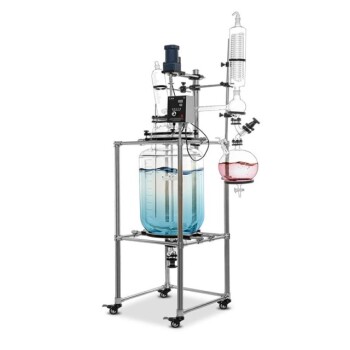Using a water bath instead of a rotary evaporator is possible in certain scenarios, but it depends on the specific application and requirements of the process. A water bath can be a more economical option for heating or maintaining a constant temperature, but it lacks the functionality of a rotary evaporator, which is specifically designed for solvent removal under reduced pressure. Rotary evaporators are ideal for concentrating compounds by evaporating low-boiling solvents efficiently, while water baths are better suited for general heating purposes. If solvent removal or concentration is the primary goal, a rotary evaporator is the preferred tool. However, for simple heating tasks, a water bath can be a cost-effective alternative.
Key Points Explained:

-
Functionality Differences:
- Rotary Evaporator: Designed for solvent removal under reduced pressure, making it ideal for concentrating compounds by evaporating low-boiling solvents efficiently.
- Water Bath: Primarily used for heating or maintaining a constant temperature, but lacks the ability to remove solvents or concentrate compounds.
-
Process Outcomes:
- Rotary Evaporator: Retains the residue (concentrated compound) in the original flask after solvent removal.
- Water Bath: Does not facilitate solvent removal or concentration; it only provides heat.
-
Economic Considerations:
- Water Bath: Generally more economical and cost-effective for basic heating tasks.
- Rotary Evaporator: More expensive but essential for specialized tasks like solvent removal and compound concentration.
-
Temperature Stability and Control:
- Water Bath: Less precise in temperature control compared to oil baths, which offer superior stability and RPM management.
- Rotary Evaporator: Provides precise control over temperature and pressure, crucial for efficient solvent removal.
-
Application Suitability:
- Water Bath: Suitable for general heating applications where solvent removal is not required.
- Rotary Evaporator: Necessary for applications involving solvent removal, concentration, or working with low-boiling solvents.
-
Operational Complexity:
- Water Bath: Simple to operate and maintain, requiring minimal setup.
- Rotary Evaporator: More complex to operate, requiring knowledge of pressure and temperature control for effective use.
In summary, while a water bath can be used for basic heating tasks, it cannot replace a rotary evaporator for applications requiring solvent removal or compound concentration. The choice between the two depends on the specific needs of the process.
Summary Table:
| Aspect | Water Bath | Rotary Evaporator |
|---|---|---|
| Functionality | Heating, maintaining constant temperature | Solvent removal, compound concentration |
| Process Outcome | Provides heat only | Retains residue after solvent removal |
| Cost | Economical for basic tasks | More expensive, specialized for solvent removal |
| Temperature Control | Less precise | Precise control over temperature and pressure |
| Application | General heating | Solvent removal, low-boiling solvents |
| Operational Complexity | Simple to operate | Requires knowledge of pressure and temperature |
Still unsure which tool is right for your lab? Contact our experts today for personalized advice!
















